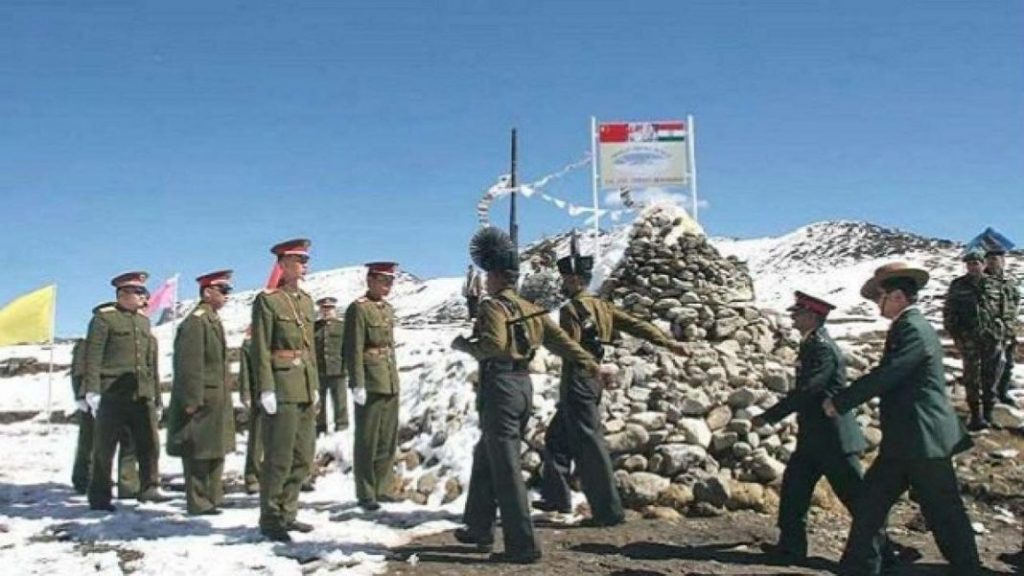
The United States has recently released its annual threat assessment report that was submitted to the US Congress by the Office of the Director of National Intelligence (ODNI), during a Congressional hearing. But what is in it for India? A lot. An armed confrontation between the two rising powers, India and China, topped the list of potential inter-state conflicts. The report also talks about a potential inter-state conflict between India and its western neighbour, Pakistan.
‘Expanded military postures’ by both India and China along the Line of Actual Control can heighten the risk of an armed conflict between the two nuclear powers, as stated by the US intelligence report. The report provides the backdrop to its assessment and points out that India-China bilateral border talks remained ‘strained,’ between India and China following the 2020 Galwan clashes. “Tensions along the Line of Actual Control (LAC) between the PRC (People’s Republic of China) and India are the worst in over four decades,” Admiral Aquilino, Commander of US Indo-Pacific Command, told the members of the House Armed Services Committee. This report comes days after External Affairs Minister S. Jaishankar said to his Chinese counterpart that the state of India-China relations is “abnormal.”
The assessment provides interesting insights on the regional front. Beijing continues to ratchet up its military capability to successfully exert its influence in the South China Sea and beyond. The report also stated that the persistent low-level friction at their shared borders has the potential to spiral down swiftly in the wake of the 2020 clash between Indian and Chinese troops. This is a reference to the skirmish between Indian and Chinese soldiers in Ladakh’s Galwan Valley along the Sino-Inidan border, in June 2020. India and China will hold the next round of high-level military talks at Chushul Moldo meeting point in Ladakh on 11th March 2023 to find a resolution to the 22-month standoff persisting at the remaining friction areas.
The report also has a brief reference to the India-Pakistan dynamic, with ODNI highlighting the risk of an escalatory cycle between the two nuclear-armed neighbours. “New Delhi and Islamabad probably are inclined to reinforce their current calm in their relationship following both sides’ renewal of a cease-fire along the Line of Control in early 2021. However, Pakistan has a long history of supporting anti-India militant groups, and under, the leadership of Prime Minister Narendra Modi, India is more likely than in the past to respond with military force to perceived or real Pakistani provocations.”
The report also pointed out that each side’s perception of heightened tensions will determine prospects of conflict between India and China and India and Pakistan. What remains to be seen is how India deals with its two-front conundrum.
(Aakarshi Srivastava contributed inputs for this report)
Author Profile
- India Writes Network (www.indiawrites.org) is an emerging think tank and a media-publishing company focused on international affairs & the India Story. Centre for Global India Insights is the research arm of India Writes Network. To subscribe to India and the World, write to editor@indiawrites.org. A venture of TGII Media Private Limited, a leading media, publishing and consultancy company, IWN has carved a niche for balanced and exhaustive reporting and analysis of international affairs. Eminent personalities, politicians, diplomats, authors, strategy gurus and news-makers have contributed to India Writes Network, as also “India and the World,” a magazine focused on global affairs.
Latest entries
 India and the WorldNovember 26, 2025G20@20: Africa’s Moment – The Once and Future World Order
India and the WorldNovember 26, 2025G20@20: Africa’s Moment – The Once and Future World Order DiplomacyOctober 4, 2025UNGA Resolution 2758 Must Not Be Distorted, One-China Principle Brooks No Challenge
DiplomacyOctober 4, 2025UNGA Resolution 2758 Must Not Be Distorted, One-China Principle Brooks No Challenge India and the WorldJuly 26, 2025MPs, diplomats laud Operation Sindoor, call for national unity to combat Pakistan-sponsored terror
India and the WorldJuly 26, 2025MPs, diplomats laud Operation Sindoor, call for national unity to combat Pakistan-sponsored terror India and the WorldJuly 25, 2025When Fire Ends, Diplomacy Begins
India and the WorldJuly 25, 2025When Fire Ends, Diplomacy Begins







